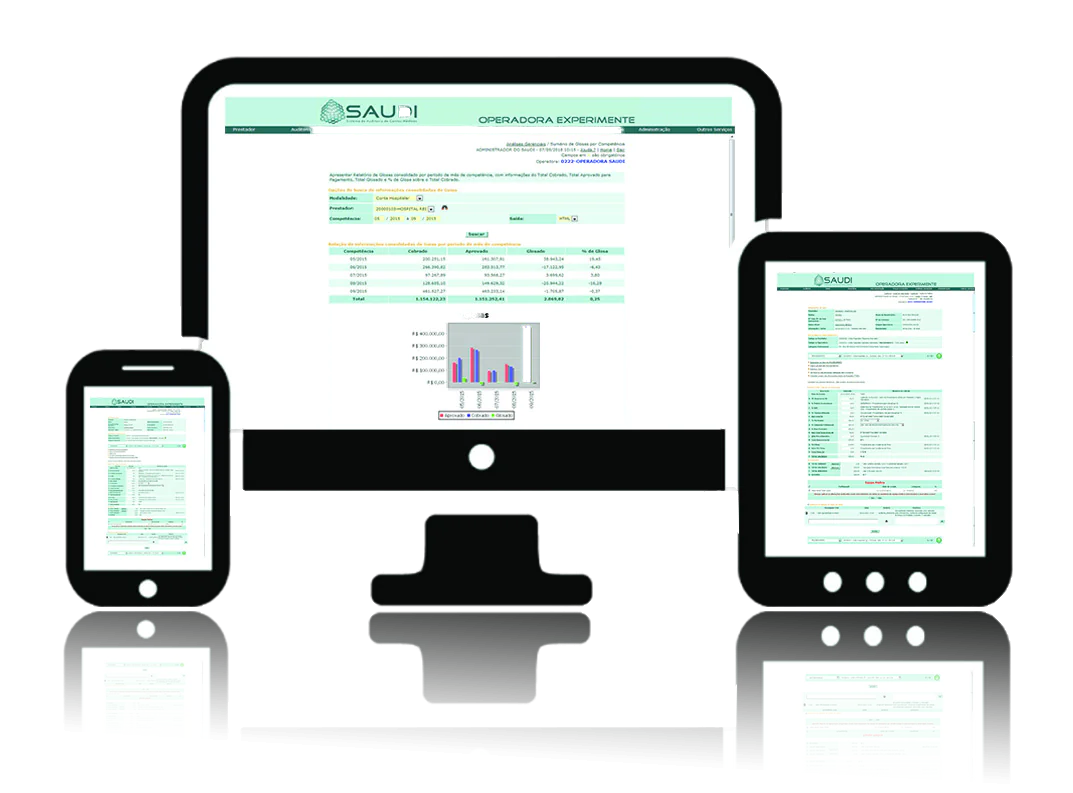 Beneficiary experience management has become one of the central pillars for healthcare operators and networks. In an increasingly competitive market and with patients demanding quality, humanization and agility in services, guaranteeing customer satisfaction is essential for loyalty and sustainable growth. But how do you measure and improve the beneficiary experience? The answer lies in analyzing customer satisfaction, carrying out surveys, obtaining feedback and implementing structured improvements to processes and the network.
Beneficiary experience management has become one of the central pillars for healthcare operators and networks. In an increasingly competitive market and with patients demanding quality, humanization and agility in services, guaranteeing customer satisfaction is essential for loyalty and sustainable growth. But how do you measure and improve the beneficiary experience? The answer lies in analyzing customer satisfaction, carrying out surveys, obtaining feedback and implementing structured improvements to processes and the network.
Why is beneficiary experience so important?
Health insurance beneficiaries are not just consumers; they are patients who seek security and trust in moments of vulnerability. When the service experience is positive, this creates an emotional bond that transcends the simple provision of services. On the other hand, service failures - whether in scheduling appointments, customer support or the quality of medical services - can lead to dissatisfaction, contract cancellations and even damage to the company's reputation.
How do you analyze beneficiary satisfaction?
There are various ways of measuring customer satisfaction with medical care. Among the most common are:
1. Satisfaction surveys:
Questionnaires are one of the most direct ways of assessing the beneficiaries' perception of the services. These surveys can be carried out immediately after a consultation, call center service or hospitalization. It is important that the questions are clear and specific, covering points such as:
- Waiting time.
- Quality of medical and administrative care.
- Conditions of the facilities.
- Problem solving.
- General experience.
Digital tools, such as online forms and health management applications, can make it easier to collect this data.
2. evaluation indices:
Indicators such as the Net Promoter Score (NPS) are widely used to measure customer loyalty. Simple questions such as "On a scale of 0 to 10, how likely are you to recommend this service to a friend or family member?" can generate powerful insights into the perception of the beneficiary.
In addition to surveys, operators should pay attention to spontaneous feedback received on channels such as social networks, complaint portals and even word of mouth. Monitoring these comments helps to identify patterns and possible areas for improvement.
4. Analysis of complaints:
Complaints registered with SAC (Customer Service) or ombudsmen are valuable sources of information. They reveal recurring problems and often highlight flaws that could go unnoticed in broader analyses.
Understanding the beneficiary's needs
 In order to propose improvements, it is essential not only to collect data, but also to interpret this information strategically. Some important practices include:
In order to propose improvements, it is essential not only to collect data, but also to interpret this information strategically. Some important practices include:
- Beneficiary segmentation: Different groups of clients have different expectations. Young people may value the speed with which appointments can be made via apps, while older people may prioritize the physical accessibility of healthcare facilities. Segmenting beneficiaries allows improvements to be targeted more effectively.
- Mapping the Customer Journey: Understanding each stage of the beneficiary's interaction with the health plan - from signing up to the contract to post-medical care - helps to identify critical moments and opportunities for intervention.
- Qualitative Analysis: Beyond the numbers, hearing real stories from beneficiaries can provide deep insights. Holding focus groups or interviews with patients is a way of understanding nuances that quantitative data cannot capture.
Proposing improvements to the network and processes
After identifying the needs and points of dissatisfaction, the next step is to implement changes. To do this, some strategies are essential:
1. Strengthening the Care Network:
- Review the availability of specialists in critical areas.
- Ensure that health facilities are located in strategic and easily accessible areas.
- Invest in modern and welcoming infrastructure.
2. Team training:
- Offering constant training for administrative and medical teams, with a focus on humanization and empathy.
- Promote workshops on effective communication and conflict management.
3. Process automation:
- Implement technological solutions that reduce waiting times and make the experience more efficient, such as scheduling applications, telemedicine and artificial intelligence.
4. Creation of Preventive Health Programs:
- Promote campaigns that encourage adherence to regular check-ups and healthy habits. Beneficiaries who perceive ongoing care in addition to one-off treatments tend to feel more valued.
Continuous monitoring with SAUDI
 Beneficiary experience management is not a one-off task, but an ongoing process. After implementing improvements, it is essential to monitor the results through metrics and regular surveys, ensuring that the changes are having a positive impact.
Beneficiary experience management is not a one-off task, but an ongoing process. After implementing improvements, it is essential to monitor the results through metrics and regular surveys, ensuring that the changes are having a positive impact.
For this it is important to have a medical audit system such as SAUDI, the one most used by the largest health insurance companies in Brazil. O SAUDI system has a set of essential modules for managing medical bills and one of them is a super intelligent dashboard that allows the manager to have a complete overview of the operator's results in real time.
Understanding and improving the beneficiary experience in medical care requires a holistic approach that combines technology, empathy and strategy. Companies that invest in this management not only build customer loyalty, but also create a competitive edge in a sector that is increasingly demanding excellence.
Schedule a free demo of SAUDI and surprise yourself with significant improvements in your healthcare provider's results within the first 3 months of use! \o/ \o/ \o/











